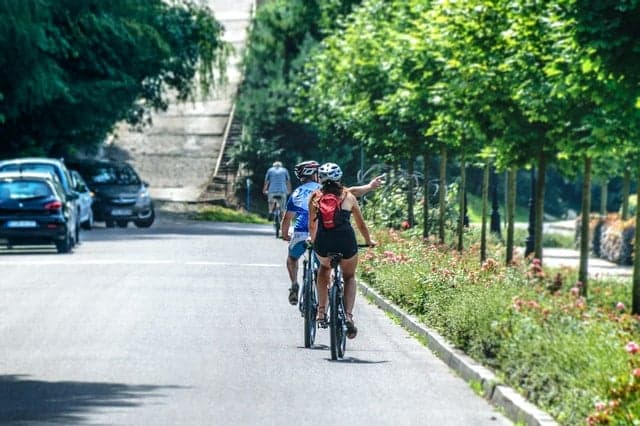Driving in Spain: What are the new rules for overtaking cyclists?

Spain’s traffic authority has new rules for overtaking cyclists on Spanish roads which come into effect on May 11th 2021. Here's what you need to know and how to avoid fines of up to €200 for not overtaking properly.
If a driver in Spain wants to overtake a cyclist, they will now have to leave a space of 1.5 metres between their vehicle and the cyclist as well as reduce their speed by 20km/h.
For example, anyone wanting to overtake a cyclist on a 90km/h road will have to reduce their speed to 70km/h as well as abide by the pre-existing safety distance.
This is the latest addition to Spain’s newest driving law changes for 2021, a set of measures relating primarily to speed limits, penalties and e-scooters.
READ MORE:
- Penalties, speed limits and prohibitions: Spain's tougher driving laws for 2021
- The device you'll soon need to have in your car by law
- REMINDER: Why you will soon have to drive at 30km/h on most roads in Spain
The head of Spain’s Directorate General of Traffic Pere Navarro justified the move by saying that when it comes to overtaking, many drivers tend to speed up rather than slow down, which increases the risk for cyclists.
In 2020, 36 cyclists lost their lives in Spain as a result of this, despite the mobility restrictions seen at the start of the year due to the coronavirus pandemic.
The measure affects all drivers, including motorcyclists.
Failure to reduce one’s speed or leave a 1.5 metre separation will result in fines of up to €200 and the loss of three points off of the offender’s driving licence.
The possibility of driving into the next lane to safely overtake cyclists (even if there’s a solid line and as long as there’s not oncoming traffic) remains, as does the ban on overtaking all vehicles if there are cyclists approaching in the opposite direction.
It’s worth noting as well that, as the amended rulebook states, vehicles won't be able to surpass the speed limit at all when overtaking on secondary roads anymore either, whereas before it was allowed by up to 20km/h when overtaking.
Comments
See Also
If a driver in Spain wants to overtake a cyclist, they will now have to leave a space of 1.5 metres between their vehicle and the cyclist as well as reduce their speed by 20km/h.
For example, anyone wanting to overtake a cyclist on a 90km/h road will have to reduce their speed to 70km/h as well as abide by the pre-existing safety distance.
This is the latest addition to Spain’s newest driving law changes for 2021, a set of measures relating primarily to speed limits, penalties and e-scooters.
READ MORE:
- Penalties, speed limits and prohibitions: Spain's tougher driving laws for 2021
- The device you'll soon need to have in your car by law
- REMINDER: Why you will soon have to drive at 30km/h on most roads in Spain
The head of Spain’s Directorate General of Traffic Pere Navarro justified the move by saying that when it comes to overtaking, many drivers tend to speed up rather than slow down, which increases the risk for cyclists.
In 2020, 36 cyclists lost their lives in Spain as a result of this, despite the mobility restrictions seen at the start of the year due to the coronavirus pandemic.
The measure affects all drivers, including motorcyclists.
Failure to reduce one’s speed or leave a 1.5 metre separation will result in fines of up to €200 and the loss of three points off of the offender’s driving licence.
The possibility of driving into the next lane to safely overtake cyclists (even if there’s a solid line and as long as there’s not oncoming traffic) remains, as does the ban on overtaking all vehicles if there are cyclists approaching in the opposite direction.
It’s worth noting as well that, as the amended rulebook states, vehicles won't be able to surpass the speed limit at all when overtaking on secondary roads anymore either, whereas before it was allowed by up to 20km/h when overtaking.
Join the conversation in our comments section below. Share your own views and experience and if you have a question or suggestion for our journalists then email us at [email protected].
Please keep comments civil, constructive and on topic – and make sure to read our terms of use before getting involved.
Please log in here to leave a comment.